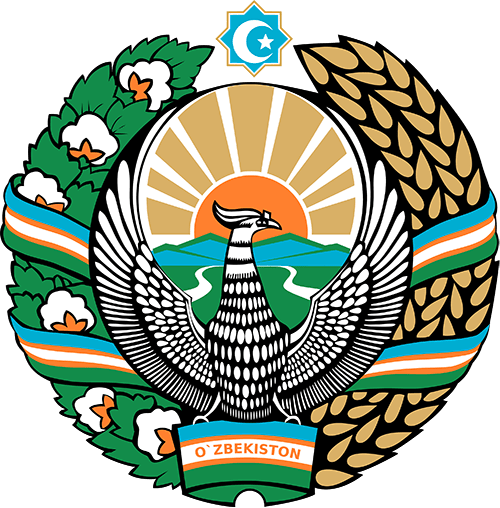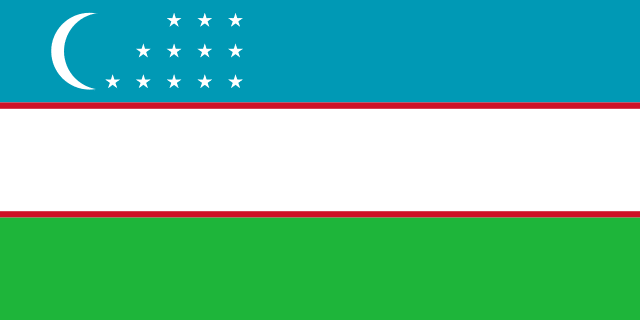АНАЛИЗ ФАКТОРОВ РАЗВИТИЯ УРОЛИТИАЗА У ДЕТЕЙ
Шамансурова Э.А., Ташкентский педиатрический медицинский институт
Абдуразакова Ш.А. Ташкентский педиатрический медицинский институт
Резюме
Мочекаменная болезнь — распространенное заболевание мочевыводящих путей во всем мире, а у детей является болезненным и дорогостоящим заболеванием, которое также может оказывать вредное долговременное воздействие на функцию почек. Ежегодная заболеваемость мочекаменной болезнью у детей увеличилась примерно на 6-10% за последние 25 лет. Мочекаменная болезнь может быть вызвана анатомическими, метаболическими и экологическими факторами. Роль метаболических нарушений составляет приблизительно 90% уролитиаза у детей. В литературе имеются данные о взаимосвязи между развитием метаболических нарушений и приемом пищи, особенно в отношении низкого потребления воды, калия и кальция, диет богатых животным белком и натрием. Исследования показывают на связь между уролитиазом и ожирением у взрослых, но у детей нет доказательств этой взаимосвязи. С появлением данных об эпидемиологических и метаболических характеристиках уролитиаза у детей, мы надеемся лучше понять причины заболевания мочекаменной болезнью и разработать более эффективные стратегии профилактики камнеобразования у детей.
Ключевые слова
мочекаменная болезнь, уролитиаз, факторы риска, ранняя диагностика
Первая страница
37
Последняя страница
45
Для цитирования
Шамансурова Э.А., Абдуразакова Ш.А. Анализ факторов развития уролитиаза у детей // Евразийский вестник педиатрии. — 2019; 3 (3): 37-45. https://cutt.ly/vcVeo6n
Литература
- 1. Белай С.И. и др. Мочекаменная болезнь: актуальность вопроса и перспективы его развития, Запорожский государственный медицинский университет, г. Запорожье, Украина // Вестник ВГМУ. – – том 15, №5. – с. 19-26. [Bilai S.I., Dovbysh M.A., Bilai I.M. Urolithiasis: urgency of this matter and prospects for its development. Vestnik Vitebskogo gosudarstvennogo meditsinskogo universiteta = // Bulletin of Vitebsk State Medical University 2016;15(5):19—26. (In Russ.)]
- 2. Зоркин С.Н., Акопян А.В. уролитиаз у детей Научный центр здоровья детей РАМН (Москва) // Саратовский научно- медицинский журнал | Выпуск 2. Дополнение | Том 72011 стр 41-44 [Zorkin S.N., Akopyan A.V. urolithiasis in children Scientific Center for Children’s Health RAMS (Moscow) // Saratov Journal of Medical Scientific Research | Issue 2. Supplement | Volume 7. 2011, 41-44(In Russ.)]
- 3. Дзеранов Н. К., Лопаткин H. A. Мочекаменная болезнь. Клинические рекомендации. — / М.: Оверлей, 2007. — 296 с. [Dzeranov N.K., Lopatkin H. A. Urolithiasis. Clinical recommendations. — / M.: Overlay, 2007 . 296 p. (In Russ.)]
- 4. Тагиров Н.С. и др. Современные аспекты этиологии и патогенеза мочекаменной болезни. // Педиатр том V № 3 2014 стр 101-109 [Vasilyev A.G., Tahirov N.S., Nazarov T.H. et al. Modern aspects of the etiology and pathogenesis of urolithiasis. // Pediatr = Pediatrician 2014;5(3):101–9. (In Russ.)].
- 5. Дехконов К.А. Физиологические аспекты обмена некоторых микроэлементов в норме и при мочекаменной болезни у детей / К.А. Дехконов, Н.У. Утегенов и др. // Журнал «Тиббиётда янги кун». 2013. № 2. С. 12–17. [KA Dekhkanov -Physiological aspects of the metabolism of certain trace elements in normal and with ICD in children . // New day in medicine– 2013. – 2 (2), 2013 (In Russ.)]
- 6. Matlaga BR, Schaeffer AJ, Novak TE, Trock BJ. Epidemiologic insights into pediatric kidney stone disease. // Urol Res. 2010;38:453- doi: 10.1007/s00240- 010-0327-9.
- 7. Bilge I, et al. Clinical importance of renal calyceal microlithiasis in children. // Pediatr Int. 2013;55:731-6. doi: 10.1111/ped.12186.
- 8. Pietrow PK, et al. Clinical outcome of pediatric stone disease. // J Urol. (2002) 167:670–3. doi: 10.1016/S0022- 5347(01)69121-3
- 9. Tasian GE, et al. Kidney Stone Recurrence among Children and Adolescents. // J Urol. 2017; 197: 246–252. https://doi.org/10.1016/j.juro. 2016.07.090 PMID: 27521691
- 10. Mohammad Amin Fallahzadeh, JafarHassanzadeh, Mohammad HosseinFallahzadeh, //What do we know about pediatric renal microlithiasis?Journal of Renal Injury Prevention, Volume 6, I ssue 2, June 2017, 70-75 http://journalrip.com DOI: 10.15171/jrip.2017.13
- 11. Vasudevan V, et al. The genetic framework for development of nephrolithiasis. //Asian J Urol 2017; 4:18–26.
- 12. Braun DA, et al. Prevalence of monogenic causes in pediatric patients with nephrolithiasis or nephrocalcinosis. // Clin J AmSocNephrol 2016; 11:664–672.
- 13. Cakir OO, et al. Association of the BsmI, ApaI, TaqI, Tru9I and FokI Polymorphisms of the Vitamin D Receptor Gene with Nephrolithiasis in the Turkish Population. J. Urol 2016; 13(1):2509–18. PMID: 26945655
- 14. David J. Changing Epidemiology and Metabolic Risk Factors in Pediatric Kidney Stone Disease. Update оn Pediatric Nephrolithiasis, Sas 2062-68
- 15. Stamatelou KK, et al. Time trends in reported prevalence of kidney stones in the United States: 1976–1994. Kidney Int63: 1817– 1823, 2003.
- 16. Novak TE, et al. Sex prevalence of pediatric kidney stone disease in the United States: an epidemiologic investigation. Urology (2009) 74:104–7. doi: 10.1016/j.urology. 2008.12.079
- 17. Andrew L., et al. Comparison of Risk Factors for Pediatric Kidney Stone Formation: The Effects of Sex Frontiers in Pediatrics | www.frontiersin.org 2 February 2019 | Volume 7 | Article 32
- 18. Lauderdale DS, et al. Bone mineral density and fracture among prevalent kidney stone cases in the Third National Health and Nutrition Examination Survey. J Bone Miner Res. (2001) 16:1893–8. doi: 10.1359 /jbmr. 2001.16.10.1893
- 19. Daudon M, Lacour B, Jungers P: Influence of body size on urinary stone composition in men and women. Urol Res 2006; 34: 193–199.
- 20. Sarica K, Eryildirim B, et al. U: Role of overweight status on stone-forming risk factors in children: Aprospective study. // Urology 2009; 73: 1003–1007.
- 21. Kieran K, Giel DW, et al.: Pediatric urolithiasis: Does bodymass index influence stone presentation and treatment? // J Urol 2010; 184: 1810–1815.
- 22. Eisner BH, Eisenberg ML, Stoller ML: Influence of body mass index on quantitative 24-hour urine chemistry studies in children with nephrolithiasis. // J Urol 2009; 182: 1142– 1145.
- 23. Wang HC, Liu C, He HY, Wang MX. A case-control study on the risk factors of urinary calculus in Uyghur children in the Kashi region. Genet Mol Res. 2015; 14(2):5862–9. https://doi.org/10.4238/2015. June.1.3 PMID: 26125785
- 24. Wumaner A, Keremu A, et al. High incidence of urinary stones in Uyghur children may be related to local environmental factors. // J PediatrUrol 2014; 10: 289–293. https://doi.org/10.1016/j.jpurol.2013.09.002 PMID: 24095687
- 25. Kairam N, Allegra JR, Eskin B. Rise in emergency departmentvisits of pediatric patients for renal colic from 1999 to 2008. // Pediatr Emerg Care. 2013; 9:462
- 26. Hernandez J.D., Ellison J.S., Lendvay T.S. Current trends, eval-uation, and management of pediatric nephrolithiasis. JAMAPediatr. 2015;169:964—70.2
- 27. Penido M.G., Tavares M.S., et al. American and Brazilian children with primary urolithia-sis: similarities and disparities. Glob Pediatr Health. 2014;1,http://dx.doi.org/10.1177/2333794X145 61289.
- 28. Tasian GE, Copelovitch L. Evaluation and medical management of kidney stones in children. // J Urol 2014; 192:1329–1336.
- 29. Fallahzadeh M.H., et al. A report on metabolic evaluation of 153 children with urolithiasis. // J Pediatr Nephrol. 2010;25:1866- 7.
- 30.Penido MG, Srivastava T, Alon US. Pediatric primary urolithiasis:12-year experience at a midwestern children’s hospital. // J Urol.2013;189:1493.
- 31. Kuroczycka-Saniutycz E, et al. Does obesity or hyperuricemia influence lithogenic risk profile in children with urolithiasis? // Pediatr Nephrol. 2015; 30: 797-803.
- 32. Prezioso D, et al. Dietary treatment ofurinary risk factors for renal stone formation. //Arch Ital Urol Androl. 2015; 87: 105.
- 33. Briefel RR, Johnson CL: Secular trends in dietary intake in theUnited States. // Annu Rev Nutr24: 401–431, 2004
- 34. Clark MA, Fox MK: Nutritional quality of the diets of US publicschool children and the role of the school meal programs. // J Am Diet Assoc 109: S44–S56, 2009
- 35. Knight J, et al.: Metabolism of fructose to oxalate and glycolate. /Horm Metab 2010; Res 42: 868–873.
- 36. Mittal R.D., Kumar R., et al. Effect of antibiotics on Oxalobacterformigenes colonization of human gastrointestinal tract. // J. Endourol. 2005, Jan-Feb. № 19 (1). Р. 102- 106
- 37. Kaufman DW, et al.: Oxalobacterformigenesmay reduce the risk of calcium oxalate kidney stones. // J Am SocNephrol19: 2008; 1197–1203.
- 38. Sidhu H, Hoppe B, et al.: Absence of Oxalobacterformigenesin cystic fibrosis patients: a risk factor for hyperoxaluria. Lancet 1998; 352: 1026–1029,
- 39. Tekgül S., et al. Guidelines on Paediatric Urology. //European Society for Paediatric Urology. 2013.
- 40. Mariela Esparzaa, et al. Risk factors evaluation for urolithiasis among children Francisco Velásquez-Foreroa,. 2016; 73(4): 228-236
- 41. Tefekli A, Esen T, et al. Metabolic risk factors in pediatric and adult calciumoxalate urinary stone formers: is there any difference? // Urol Int.2003;70:273
- 42. VanDervoort K, et al. Urolithiasis in pediatric patients: a single centerstudy of incidence, clinical presentation and outcome. // J Urol.2007;177:2300.
- 43. Breslau NA, et al. Relationship of animal protein-rich diet to kidney stone formation and calciummetabolism. // J ClinEndocrinolMetab. 1988;66:140
- 44. Nicar MJ, Peterson R, Pak CY. Use of potassium citrate aspotassium supplement during thiazide therapy of calciumnephrolithiasis. // J Urol. 1984;131:430
- 45. Spivacow F, et al. Metabolic risk factors in children with kidneystone disease. // Pediatr Nephrol. 2008;23:1129
- 46. Fallahzadeh MH, Zare J, et al. Elevated serum levels of Vitamin D in infants with urolithiasis. // Iran J KidneyDis. 2012;6:186-91.
- 47. Miller LA, Stapleton FB: Urinary volume in children with urolithiasis. // J Urol 141: 918– 920, 1989
Статья доступна ниже :



